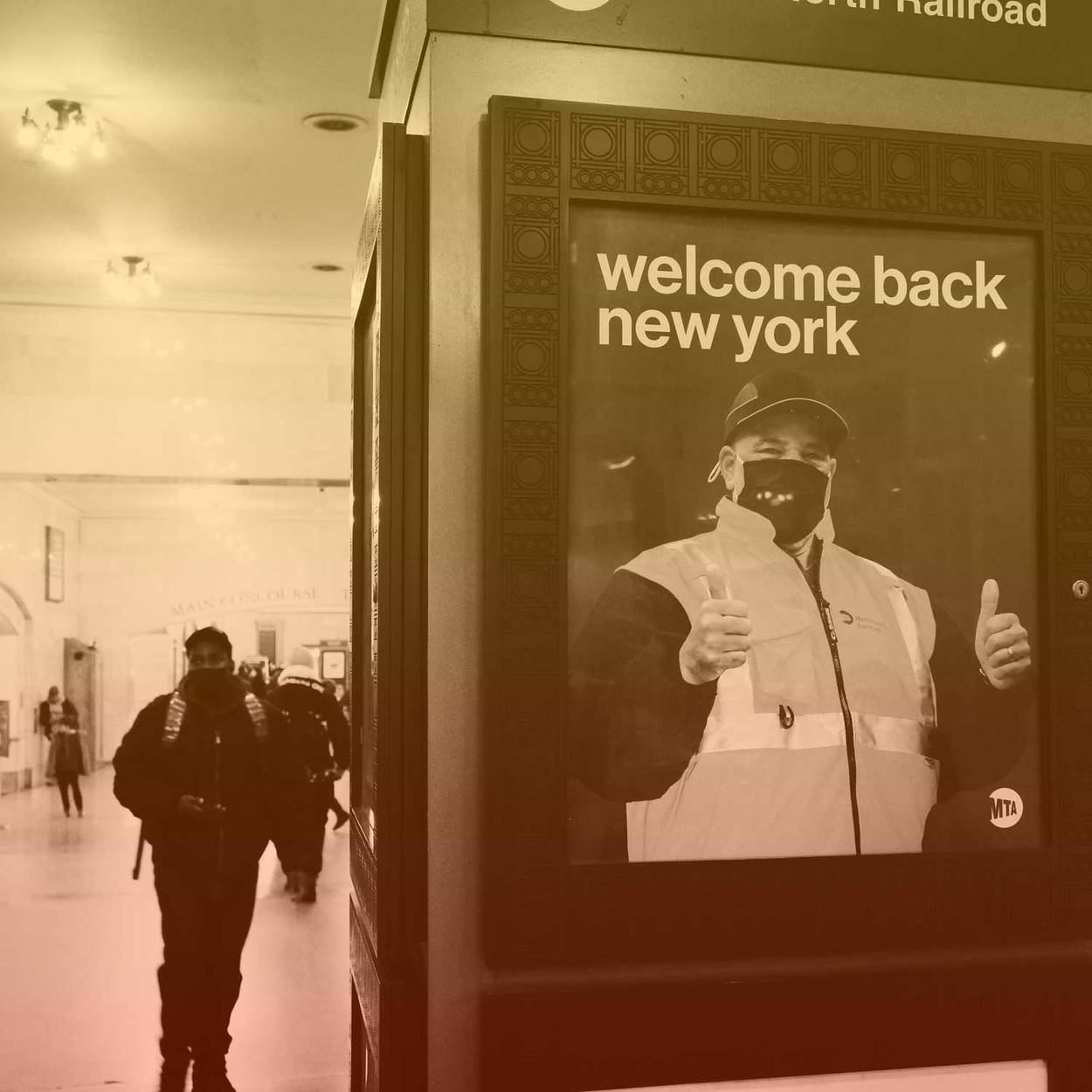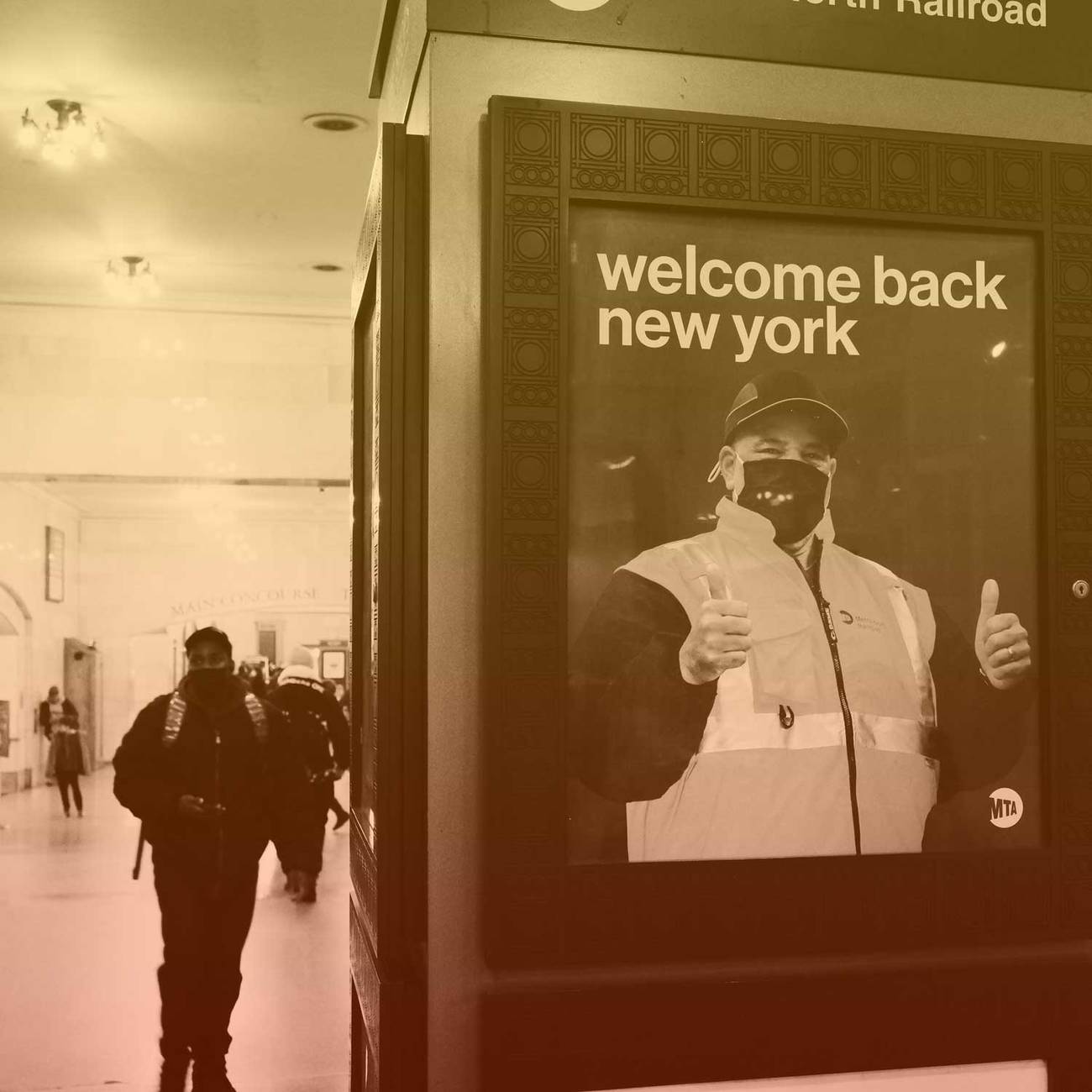Kill Off the Old City so New Cities Can Be Born
Urban centers are being hollowed out while their peripheries are booming. This is the emerging shape of the American city.

Spencer Platt/Getty Images

Spencer Platt/Getty Images

Spencer Platt/Getty Images

Spencer Platt/Getty Images
After decades of self-celebration and relentless media hype, the great “urban renaissance” predicted by the New Urbanists—a vision of cities built by and for the creative class—has come crashing down. Where the smart set once proclaimed that mayors should rule the world or that economic growth would increasingly cluster in a handful of super cities, now even The New York Times bleakly warns of an “urban doom loop.”
The very impressive blocks of skyscrapers that housed many of the world’s leading corporations have gone from harbingers of the future to something resembling the abandoned factory towns of the Industrial Revolution. Transit systems critical to the old urban model are in free fall. In great cities like New York, Los Angeles, or San Francisco, criminals and the homeless, many of them mentally disturbed and unstable, lurk on the streets, in the parks, and in the stores.
At the same time, residential neighborhoods in places like New York, Boston, and even much of San Francisco have retained their streetwise vitality. Since the pandemic, Brooklyn has experienced a resurgence of new businesses while Manhattan has seen large declines, particularly in its office-dependent retail sector. Additionally, a new and largely unheralded chapter of urbanity is being written in suburbs and exurbs as these areas, once derided as cultureless wastelands, are increasingly walkable and diverse, in some ways challenging the supremacy of traditional cities by becoming more like them. Even as urban centers struggle, their peripheries are flourishing. This is the emerging shape of today’s American urban landscape.
The decline of the transactional city
Urban history is about change. In classical times, imperial cities—Babylon, Rome, Beijing, Constantinople, Baghdad, Tenochtitlan—dominated by feeding off the wealth and labor of subject peoples. Later, in the West at least, urban giants were supplanted by small, nimble trading cities such as Genoa, Florence, Lubeck, Antwerp and Amsterdam—places that offered, as Rene Descartes put it, “an inventory of the possible.” With the industrial era came another urban form, this time built around mass manufacturing, epitomized by Manchester, Leeds, Dusseldorf, Osaka, Wuhan, Sao Paolo, Chicago, Cleveland, and Detroit.

Read all the articles in the series here. Art: Ben Denzer
As manufacturing hubs suffered de-industrialization in the late 20th century, prospects rose instead for what Jean Gottman described as the “transactional city,” characterized by massive high-rise office buildings filled with elite professionals occupying “the commanding heights” of towers in London, New York, San Francisco, Chicago, and Tokyo. These cities were widely hailed by academic researchers as presaging a high-tech economic future where, as The New York Times’ Neil Irwin predicted, “a small number of superstar companies choose to locate in a handful of superstar cities.”
Yet even as the transactional city was being praised, there were clear (albeit ignored) signs of a slow, inexorable decline. Office occupancy has been declining since the turn of the 20th century, and the construction of new office space has also fallen. In 2019, before the pandemic, construction was at one-third the rate of 1985, and half that of 2000.
Wealth and educated people, meanwhile, continue migrating to the periphery. As are the big multinationals, with some companies planning to reduce their office footprint by as much as 20%.
The pandemic clearly accelerated this process, impacting dense transit oriented urban centers. This was especially the case in New York, which had higher adjusted COVID fatalities than car-dominated suburbs. The lockdowns, and the ensuing riots over the murder of George Floyd, generated a devastating rise in crime and lawlessness in London, Paris, Washington, New York, Los Angeles, San Francisco, Philadelphia, and Chicago, further accelerating flight from dense urban areas. In some parts of Chicago and Philadelphia, young men now have a greater chance of being killed by firearms than the American soldiers who served during the wars in Afghanistan and Iraq.
Remote work and its implications for core cities
Cities were once hubs of labor, but this is no longer the case. According to Nicholas Bloom, an economist at Stanford, remote workers will soon constitute at least 20% of the workforce—more than three times the pre-pandemic share. A study from the University of Chicago suggests that online work will constitute as much as one-third of the workforce, and up to 50% of the workforce for the kind of tech and marketing jobs generated by Silicon Valley. Today a majority of workers are able to work from home part time (46%) or all (19%) of the time.
“I don’t know when we’ll get back to the pre-pandemic asset values because I do think there’s something structural and permanent about this,” Ted Egan, the chief economist of San Francisco, recently said. “I don’t think office workers are ever going to be spending that much time in the office and we’re just going to have to figure out ways, in office centers, to accommodate more people who are there less often. I think that’s kind of the future of office space.”
As for the economic fallout, it may just be beginning. Office buildings in the 10 leading metros remain roughly 50% occupied, and Wall Street is clearly losing interest in new projects. In recent months, many of the property giants—RXR, Columbia Property Trust, Brookfield Asset Management—have defaulted on billions in commercial property loans. The Atlantic reports some $1.5 trillion in commercial loans will soon be coming due, with many holders unlikely to be able to pay them. The collapse of regional financial institutions like Silicon Valley Bank, First Republic, and Signature are all partially the results of aggressive real estate lending.
San Francisco, once home to one of the nation’s strongest Central Business Districts (CBD), has suffered office vacancies three times pre-pandemic levels and is now experiencing record high vacancy rates. This recently led the San Francisco Chronicle to editorialize that the city’s downtown was “on the verge of collapse.” A Bay Area Council survey projects most companies will expect employees to come to the office three days a week or less, with barely one in five seeing a return to “normal.” Similarly, a Partnership for New York survey of its members revealed the expectation that roughly three in four employers will allow either a hybrid model that requires two to three days at the office or no office days at all. Today, 26 Empire State Buildings could fit into New York City’s empty office space, as occupancy in the city is hovering around 50% of pre-pandemic levels.
Despite optimistic predictions of a wide-scale return to the office, “zombie office spaces” continue to plague downtowns around the country. Even in New York City, leaders realize that the high-rise office tower is increasingly obsolete. Many embrace plans to convert these towers to housing but this may be difficult—especially for newer high rises. According to one recent estimate, barely 20 million of the city’s 420 million square feet of office space is suitable for conversion, however much this is desired by the building’s desperate owners. New York City office buildings alone, according to one industry estimate, are suffering a 44% decline in long run value.
The new, and improved, suburbs
For almost a decade, urbanists have ignored the reality that cities have been losing out to suburbs and exurbs. Migration to dense cities started to decline as early as 2015, when large metropolitan areas began to see an exodus to smaller locales, with the biggest losses being among white adults. By 2022, rural areas even began to gain population at the expense of cities. This trend was no doubt amplified by the increasingly dystopic aspect of even our richest cities: Almost a fifth of residents in the 50 largest U.S. cities live below the poverty line, and once magnetic cities like Los Angeles, Portland, San Francisco, Oakland, and Seattle have among the highest per capita rates of homelessness in the country.
As the poor stay put, the middle class heads farther out on the periphery, a pattern that well predates the pandemic. In 1950, the core cities accounted for nearly 24% of the U.S. population; today the share is under 15%. In contrast, the suburbs and exurbs grew from housing 13% of the metropolitan population in 1940 to 86% in 2017, a gradual increase of 2% a year. Suburbs have accounted for about 90% of all U.S. metropolitan growth since 2010; over that time, suburbs and exurbs of the major metropolitan areas gained 2 million net domestic migrants, while the urban core counties lost 2.7 million. This all accelerated during the pandemic, where in just two years cities lost more than 2 million more residents; New York, Los Angeles, Chicago, and San Francisco all saw their populations decline.
Planners and the urban intelligentsia have long detested suburbs, one reason why urbanists often ignore these facts. Lewis Mumford compared suburbia to ingesting “tasteless prefabricated foods.” New urbanist James Howard Kunstler has described suburban sprawl as “the greatest misallocation of resources the world has ever known.” Al Gore has been waging a dogged war on suburbia since before the end of the last century, and The Nation recently published an article calling the periphery “breeding grounds” for white nationalists, fascists, and homophobes.
These views may sell in Manhattan, but suburbs and exurbs continue to steadily usurp the economic and social functions long dominated by cities. No longer just “bedrooms” serving as dormitories for office workers, the suburbs from 2010 to 2017 accounted for over 80% of all job growth. The 50 highest-growth counties, mostly located on the fringes of major Sunbelt metros, enjoyed an employment increase of more than 2.5 times that of other counties in 2019. Since the pandemic, suburban office space has consistently outperformed that of the nation’s Central Business Districts.
Suburbs are also evolving culturally, now touting their walking districts, extensive parks, and community facilities. Lower crime rates, single family homes, and better schools clearly appeal to millennials, two-thirds of whom, even before the pandemic, favored suburbs. Educated millennials, the key to past urban growth, are increasingly migrating from the dense coastal cities to the suburb-dominated Sunbelt. Fast-growing counties, home to most planned communities, saw large increases in those earning over $75,000, and especially among those between the ages of 30 and 44. The rate of 25-34 demographic increase in the Sunbelt between 2015 to 2019 was almost four times as high as the national average.
Critically, suburban growth is also being driven by a surge of minorities and immigrants. The majority of America’s ethnic minorities live in suburbs, accounting for virtually all the suburban growth over the past decade. The places favored by the foreign-born are no longer New York but sprawling Sunbelt locales like Miami, Houston, and Dallas-Ft. Worth. The urban ethnic enclave is rapidly being replaced by suburban diversity expressed in temples and churches that line the freeways and in strip malls catering to immigrants and their offspring.
The reinvention of cities
In an era of dispersal, cities need to realign their politics. Traditionally cities tilted left of center, but often local governments were pragmatic on such things as economic growth and public safety. The urban electorate is changing, however, and increasingly dominated by what the late Fred Siegel described as “an upstairs, downstairs” political configuration—an alliance between liberal affluent voters, the dependent poor, and workers in the public sector. They may identify as egalitarian, but transactional cities like Boston, Los Angeles, New York, San Francisco, and San Jose now suffer, according to Pew Research, the largest income gaps between the bottom and top quintiles of all American cities.
There are, however, some glimmers of hope. African Americans, alongside white and Latino voters, have helped elect pragmatic moderates such as Houston’s Sylvester Turner or New York’s Eric Adams. The voters of Austin—Texas’ blue capital—rescinded tolerant urban camping provisions backed by their progressive leaders by a large vote. Even in San Francisco, hotbed of far-left agitation, progressive school board members were overwhelmingly defeated in February 2022, and voters dethroned their ultra lenient district attorney just a few months later. Similarly left-leaning Seattle removed its ultra-progressive DA, and Buffalo voters defeated a socialist-backed Democrat in favor of a moderate African American.
But in the new era, cities will have to compete with their suburbs by offering amenities and interactions not readily available in the suburban expanses of the Sunbelt. At the very least, those offering the most in cultural amenities—New York, Chicago, London, Paris—will continue to attract the young and the childless as well as the very rich, at least as a part-time abode.
We could see the recasting of urban centers into what the University of Chicago’s Terry Nichols Clark has described as “entertainment machines.” This follows H.G. Wells’ prediction that inner cities will evolve into “a bazaar, a great gallery of shops and places of concourse and rendezvous” while families and industry head toward the periphery. Under any reasonable scenario, places like New York or Los Angeles will continue to welcome the global rich. They still boast many of the world’s best museums and restaurants, and sustain the large arts communities often highly attractive to the haute bourgeoisie.
But the culture-based recovery is not likely to turn things around for much of even the most artful cities. What is required is a renaissance based on improving not the city’s amenities or downtowns but their urban neighborhoods. These are places that could attract a significant share of millennials, not as temporary sojourners but as people committed to staying there long term and even raising families there. These numbers might even swell if urban real estate prices fall.
Indeed as remote work expands, downtowns suffer but many urban neighborhoods like New York’s Park Slope, Carroll Gardens, and Brooklyn Heights, or Chicago’s Wicker Park, San Francisco’s Noe Valley or Los Angeles’ Silver Lake continue to appeal to well-educated young people. Lured by cosmopolitan lifestyles and high-wage jobs, these neighborhoods have accounted for roughly half of the revival of dense urban areas, which appear to have survived the pandemic better than the downtown core.
The best hope for cities lies here, at the grassroots level, and by transforming the city once again into a place that, as Jane Jacobs put it, doesn’t “lure the middle class” but that “creates one.” To achieve this dynamism, cities need to become more people-friendly, focusing on basic things that could sustain middle- and working-class families, once again restoring the broad promise of urban life.
Joel Kotkin is the Presidential Fellow in Urban Futures at Chapman University and executive director of the Urban Reform Institute. His new book, The Coming of Neo-Feudalism, is now out from Encounter. You can follow him on Twitter @joelkotkin.